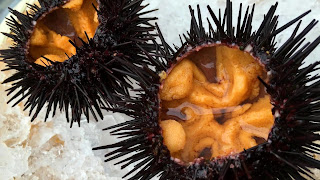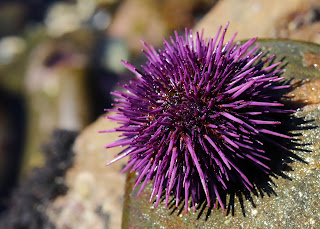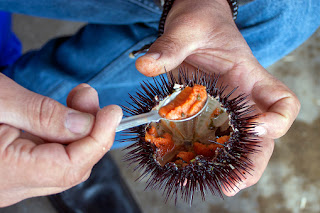Sea urchins and sea invertebrates usually live on the seabed. They come in a variety of colors. They can be found in all oceans of the world from the deep to the polar waters, tropical forests, kelp forests, and seagrass beds. They have a globally outer skeleton called a test that contains hundreds of moving spines, tube feet, and small organs such as the pincer. Their tube feet stretch through the small holes in their test. The feet of the tubes are fitted with suckers that help them hold on to objects, move, and remove unwanted debris. Small pins also help to remove unwanted items. The spines are connected to the nodules in their inspection. Sea urchins are extremely endangered so they can rely on their beaks to prevent predators. They may also use their spines to move. Their digestive and reproductive organs are found within their bones.
They usually have small sharp lines or large dull spines. Spines may be longer, thinner, shorter, or lumpy. Each type usually has one type of spine. You can pick up many urchins without getting hurt. However, some have sharp toxins that can cause painful piercing wounds. Its circular bones are composed of interlocking plates. Because of their proportional shape, the true sea urchins described in this article are called common urchins, in contrast to their unusual relatives' heart urchins, sand dollars, and sea biscuits. The mouth of the sea urchin is found beneath it. They eat a building called Aristotle's lantern. It is composed of 5 solid plates that meet like a beak. They can use these plates to remove algae from the area and attack and eat other organisms such as mollusk and tube worms. Some even use their teeth to pierce the hard rock, creating a crack in which they can sit. Sea urchin spines protect small animals such as shrimp and young fish.To reproduce, in many species of animals, male and female urchins simultaneously release sperm or eggs into the water. Fertilized eggs are hatched into worms that swell up and down before they develop into small urchins and settle down. Some deep-sea and other cold-water species exceed their caterpillar class. Adult urchins usually grow between 1 and 4 inches (2.54 to 10 cm) in diameter, but some species are much larger. Sea urchins can be important in controlling algae in the water. Too many algae can prevent corals from getting enough sunlight. Predatory animals such as sea otters, sea stars, snails, and other fish like to eat urchins from the sea. In areas where there are not enough hunting animals, the number of sea urchins can explode. With its regular design, excessive sea urchins can damage kelp forests. Kelp provides a habitat for many marine animals. Sea urchins, on the other hand, are predators, and the scraps of kelp that they do not eat become food for detritivores. In some cultures, the gonads of sea urchins are considered a delicacy. They can be eaten raw, cooked, or dried.


